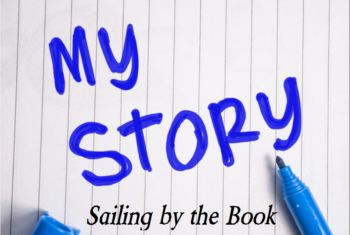By William C. Winslow
I’m not anti-electronic gear, believe me. I carry a full complement of such equipment on my 23- foot cruising catboat, along with paper charts. These navigational aids help me sail from point A to Point B safely, but they are not as important as my eyes.
As an experienced skipper, I know what to expect in local waters because I have studied them up close, at all times of the year, and in different weather conditions. My wisdom, accumulated by on-the-scene observation, is what I rely upon to fill in the gaps in information that even the most sophisticated GPS, chart plotters, gauges, and even paper charts miss.
Take the harbor in eastern Long Island where I keep my boat. From my slip to deep water (buoy 1), it’s a mile-long zigzag of a narrow channel with thin water on either side. I can save 10 minutes if I deviate to a straight line course for a third of a mile, but the chart shows a long sand bar blocking my passage. Having spent some time checking out high and low tide depths, I’ve worked out a window within the eight-hour tide changes when I can “safely” pass over this bar (I have a paper tide table, too). However, I still need to keep my eyes on my surroundings and stay mindful of the task at hand each time I head out, as what worked last week may not work anymore.
Storms and hurricanes change conditions, as does a dredging project. Markers may move or be dragged, and rocks submerged most of the time may not be flagged. The installation of seasonal fish nets and lobster and crab traps introduce new hazards to successful progress, even if the water remains deep enough.
If you regularly sail the same waters, you know tidal changes challenge your ability to navigate into tricky harbors and anchorages. But you can’t limit your observation to watching the depth finder — almost all measure the shortest straight line between the boat and the bottom. That won’t tell you how much water there is 20 feet ahead and even going at a cautious speed of five knots won’t prevent you from an involuntary stop.
It’s difficult to gauge a current’s strength without being in it. Running against a five knot current gives instant feedback on whether you and the boat are comfortable being thrust inside of a washing machine! Such whirlpools drive their share of vessels ashore, for sure.
Your instruments might tell you wind and tide speed, but if you are slamming into both foul wind and tide (as often happens in Buzzards Bay, south of Cape Cod), your seamanship will be severely tested. For sailors, the same goes for shortening sail. You have to experience reefing to cope with your limitations — no piece of electronics can predict your personal safe zone.
I haven’t even shared what happens when the wind decides to pipe up just as you try to dock and wind down your day. Only real time practice will tell you what velocities impede you, but a wind gauge can’t be a substitute for your observations of what’s happening with other vessels in the vicinity and any boat patterns that you might jump in between.
Note: I keep up with navigational changes on a weekly basis by subscribing to Notice to Mariners, published by the National Geospatial-Intelligence Agency: www.nga.mil/ProductsServices/NauticalHydrographicBathymetricProduct/Pages/NoticeToMariners.aspx
The author is the Division 5 – Staff Officer Public Affairs, First District Southern Region, for the U.S. Coast Guard Auxiliary, the all-volunteer, non-military arm of the Coast Guard, teaching boating safety education and conducting search and rescue operations. Visit http://cgaux.org/ to join the Auxiliary or for class information.




